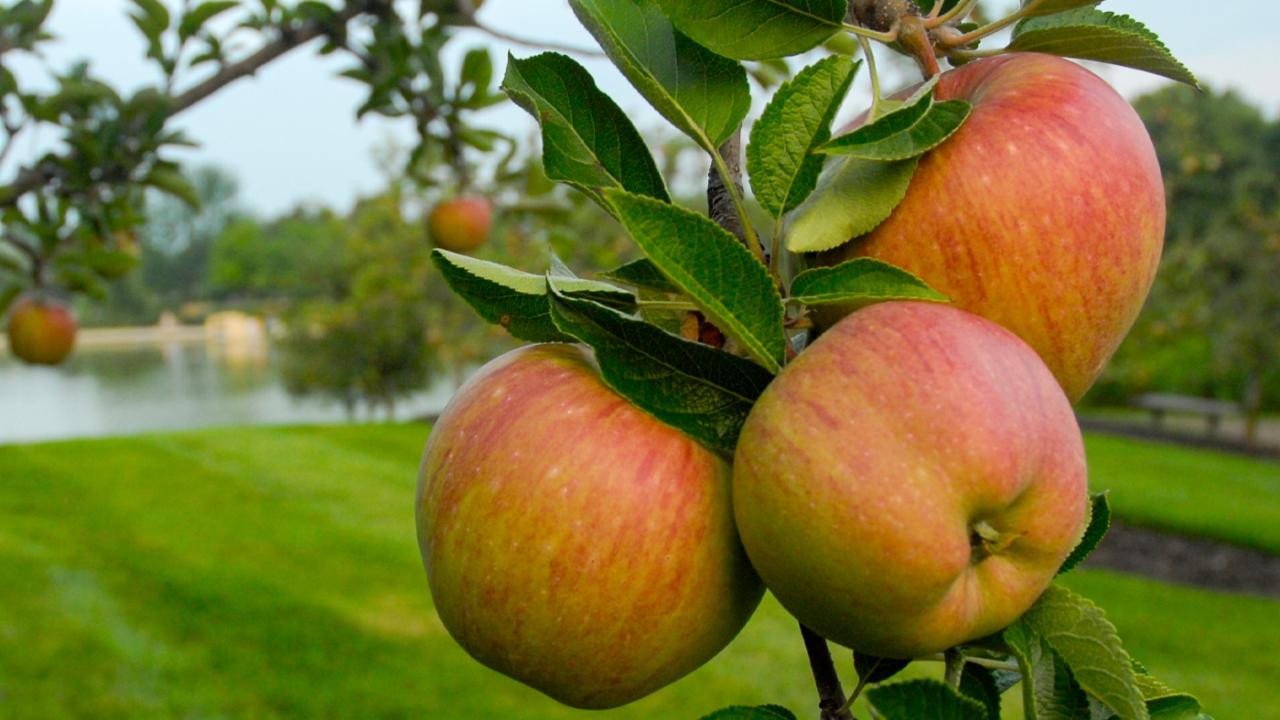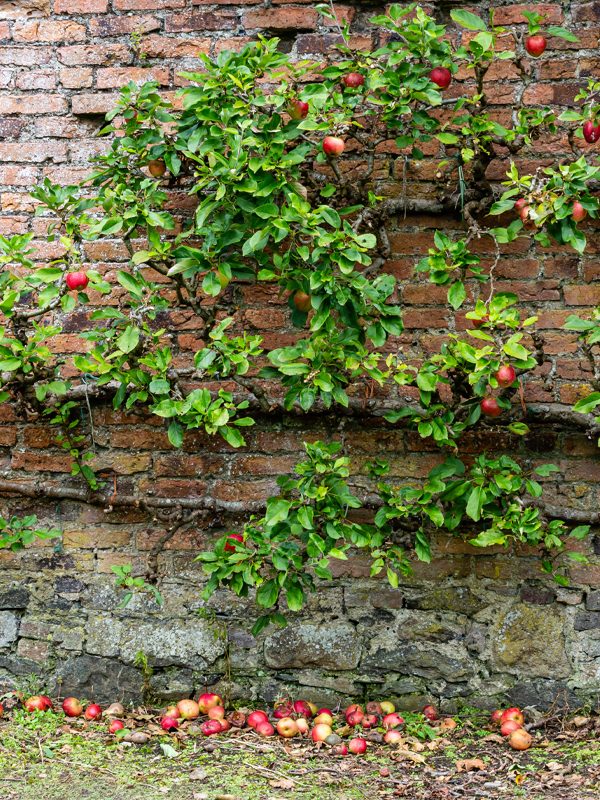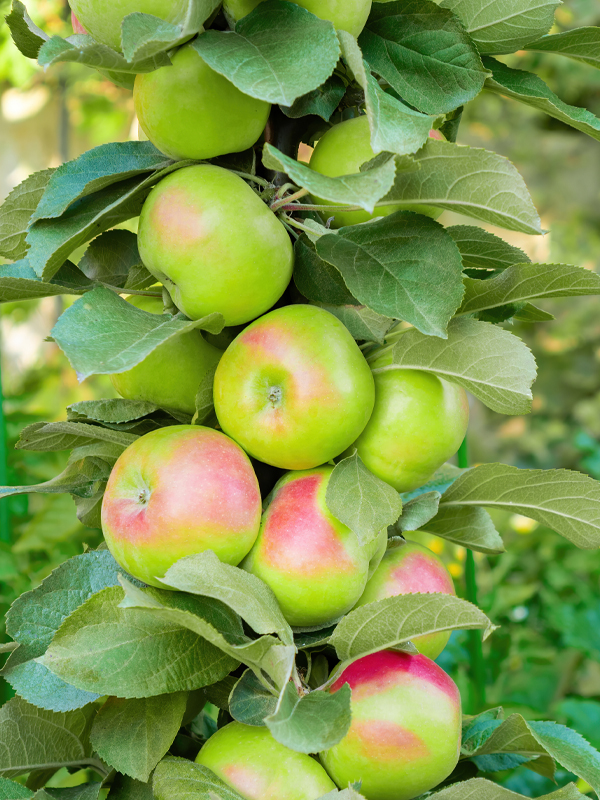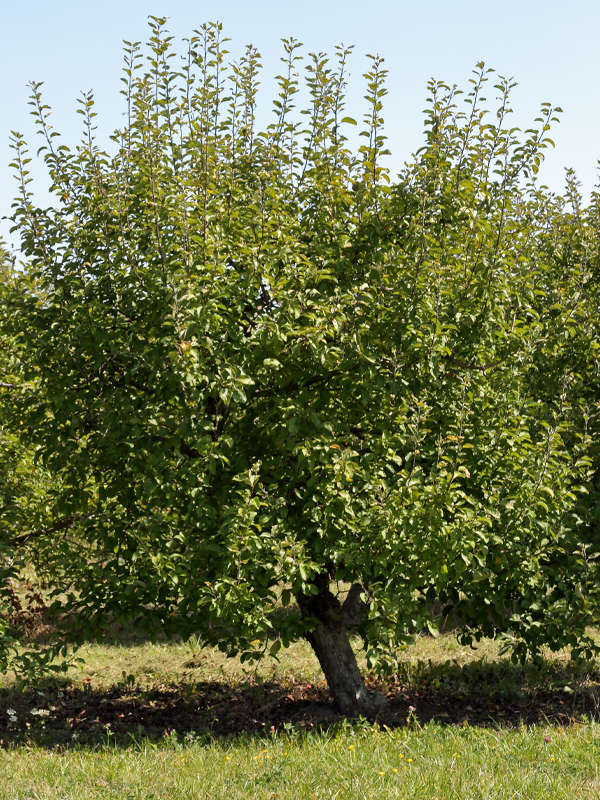

Apples
Malus spp.
Ask most families what their favorite fruit is and the answer is unanimous — the apple! Whether picked fresh on a crisp autumn day or baked later into pies and cobblers, apples are enjoyed by more adults and children than any other fruit. The good news for gardeners is that you don't need an orchard to grow apples. There are several options available to both suburban and urban gardeners who have limited backyards, small-space gardens, patio gardens, or even container gardens.

Espalier Apple Trees
Apple trees are natural candidates for the espalier method of growing plants flat against a wall, fence or wire support. Examples of the different types of espalier can be seen at the Chicago Botanic Garden's Regenstein Fruit & Vegetable Garden. Gardeners who opt for this decorative and formal method of growing fruit trees will be pleasantly surprised by the amount of full-size fruit the relatively small tree yields. The secret to successful espalier is pruning. By controlling the tree's woody growth, its energy is put into fruit production. The mature height of an espaliered apple tree is 6 to 8 feet, with typically three or four sets of lateral branches. Espalier is a perfect solution for gardeners with limited lawn space or those desiring a formal focal point in their gardens.

Container Apple Trees
Hybridizers answered the demand for hardy, but smaller, patio fruit trees by developing single-stemmed apple trees that could grow in containers. These trees flower and produce full-sized fruit in either red or yellow varieties, usually by the third year after planting. Gardeners can create living screens with these 8-foot columnar trees by arranging their containers in a row; alternatively, they can place their pots freely in full-sun locations on their patio. Containers must be 18 inches wide, filled with a mix of organic matter, compost, lightweight potting soil and vermiculite. Because nutrients are washed away by constant watering, gardeners are advised to fertilize their plants every 10 to 14 days with a liquid balanced fertilizer. Plant more than one variety of apple to ensure proper cross-pollination and good fruit development.

Semidwarf And Dwarf Apple Trees
Home gardeners with large, sunny backyards might consider the semidwarf apple trees. A mature tree grows up to 15 feet with an attractive full, oval-shaped canopy. These are the most productive of all fruit trees, yielding baskets of ripe fruit in early to late fall. Favorite red and yellow varieties include 'Winesap', 'Delicious' and 'Yellow Delicious'.
For the truly small-space garden, a dwarf red or yellow apple tree is the smart choice. Even smaller, between 8 and 10 feet, they offer the same ornamental shape with full-sized, tasty fruit. With trees this small, there should be no problem planting more than one variety, necessary for cross-pollination and the best fruit production.

